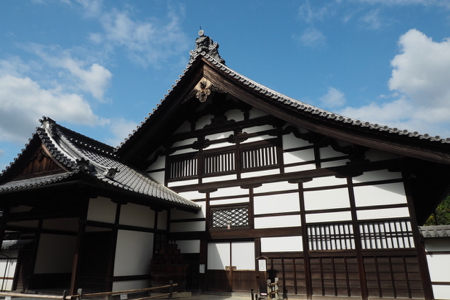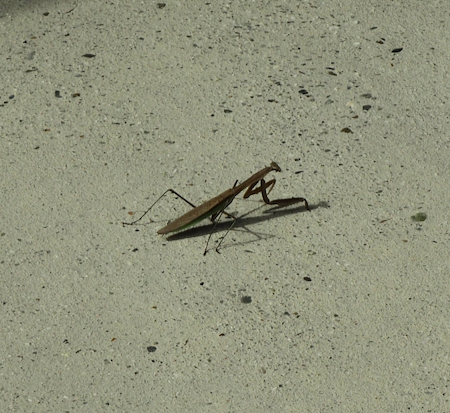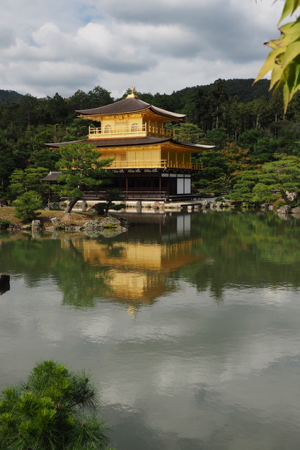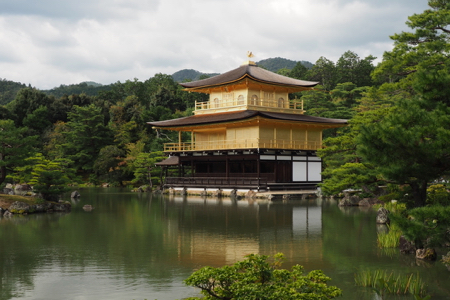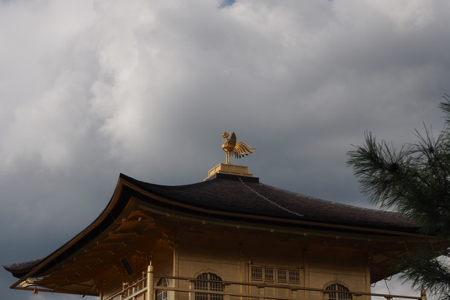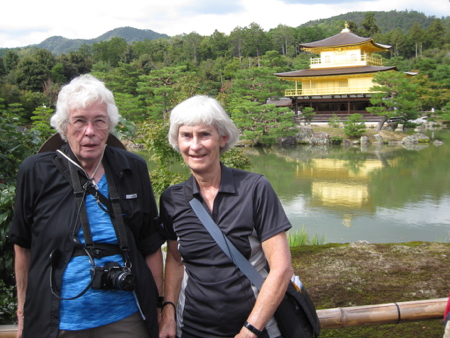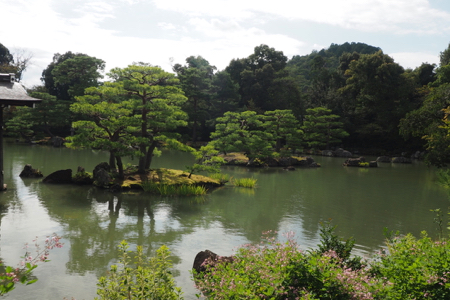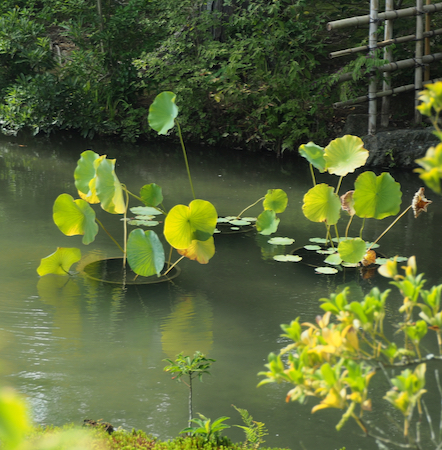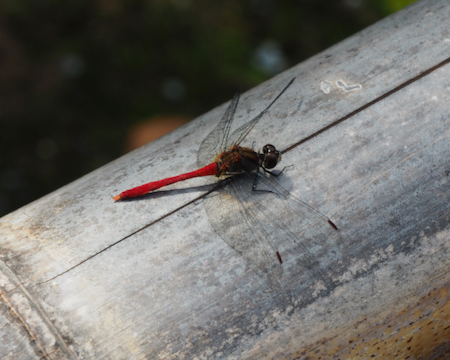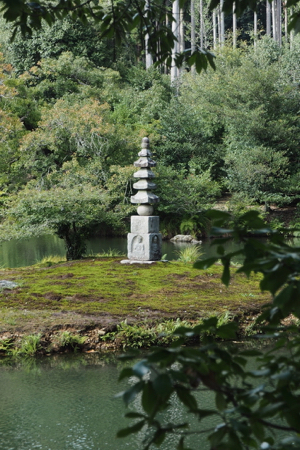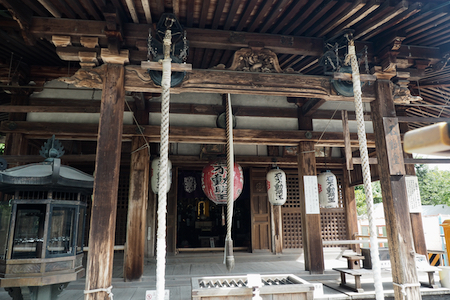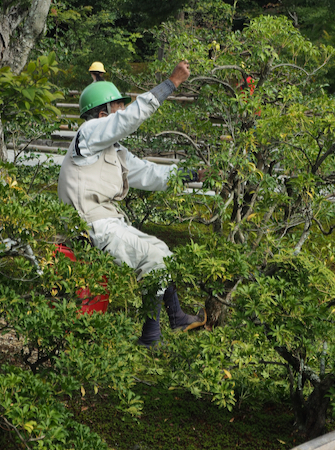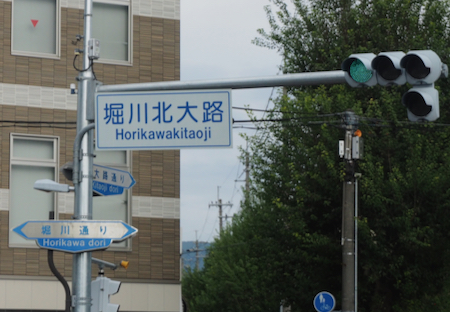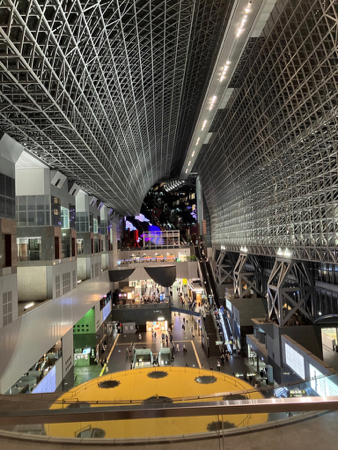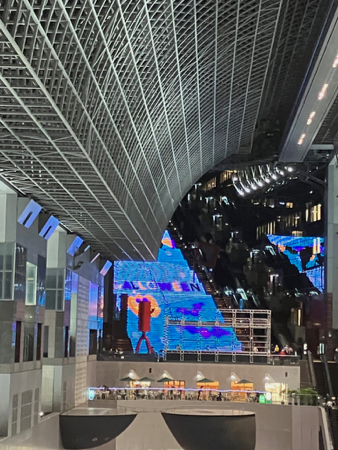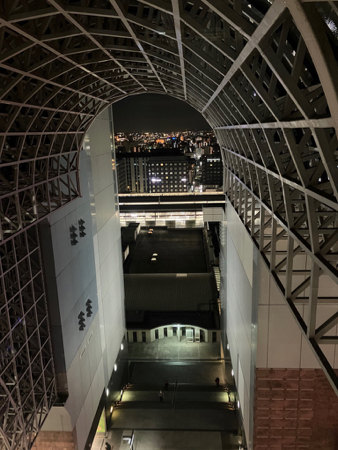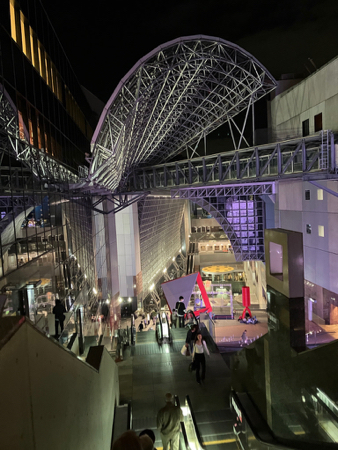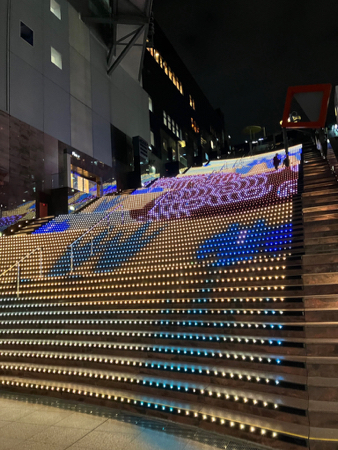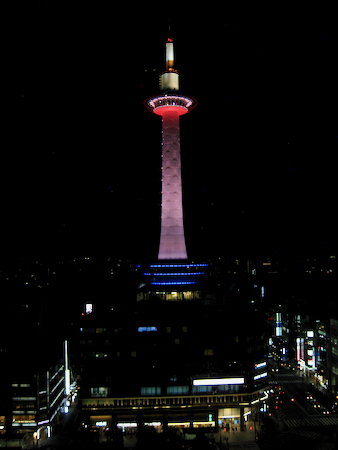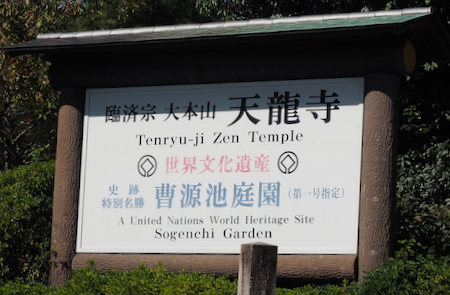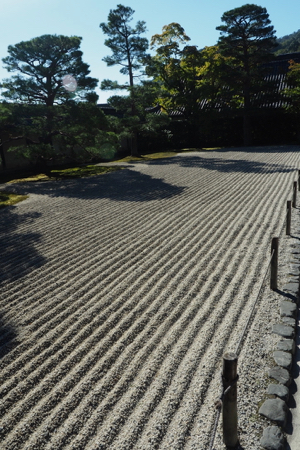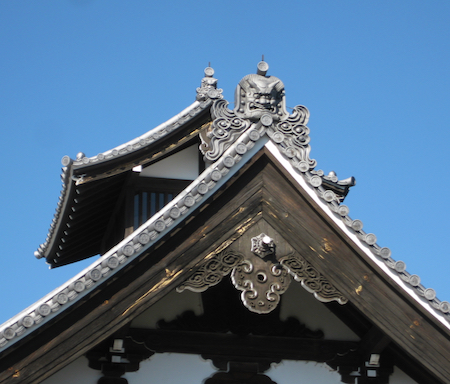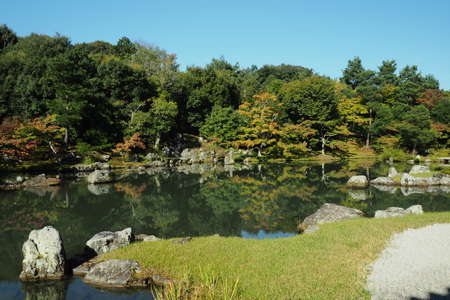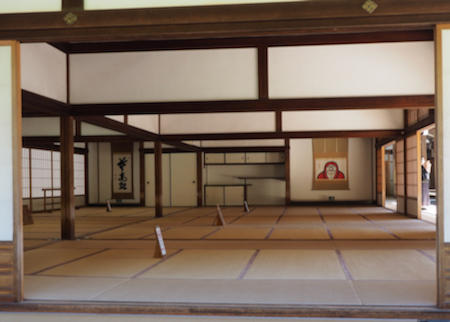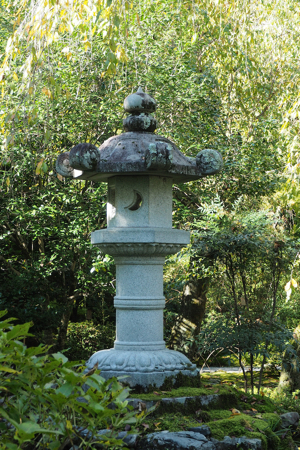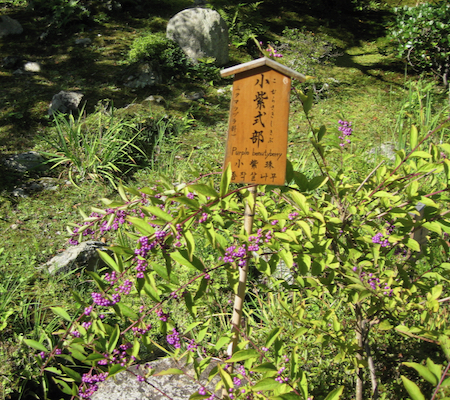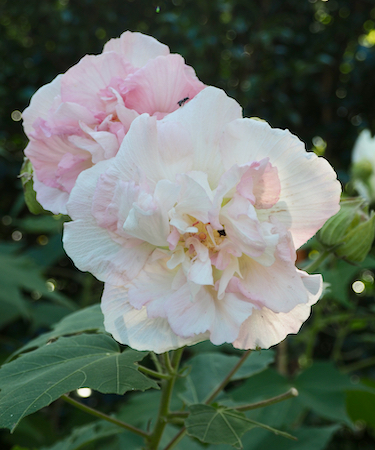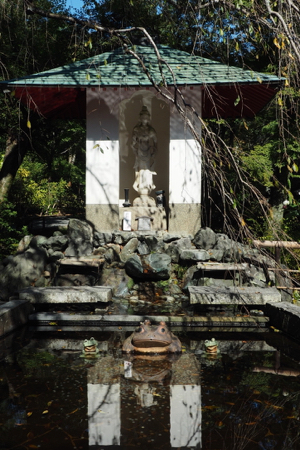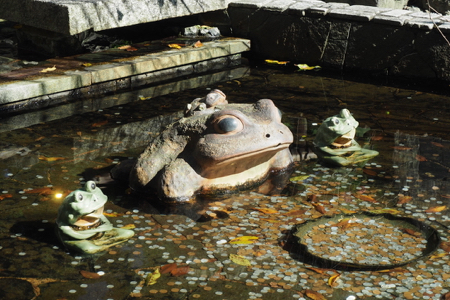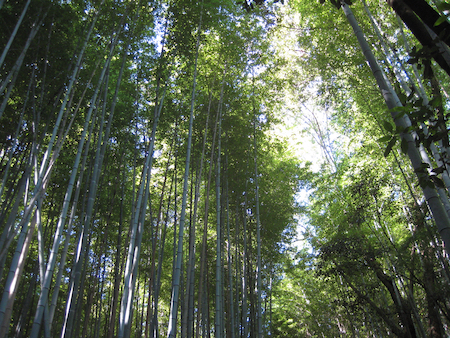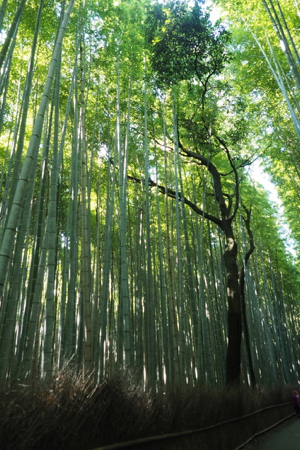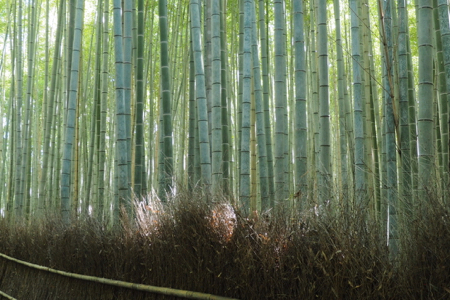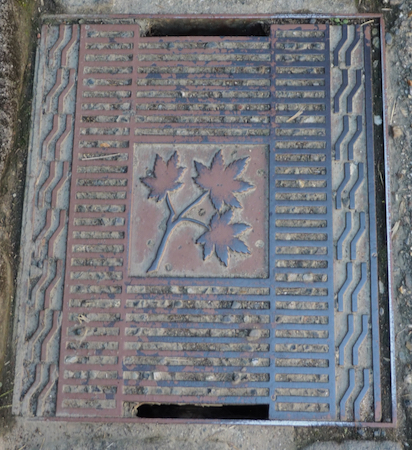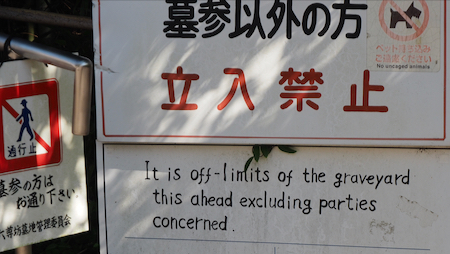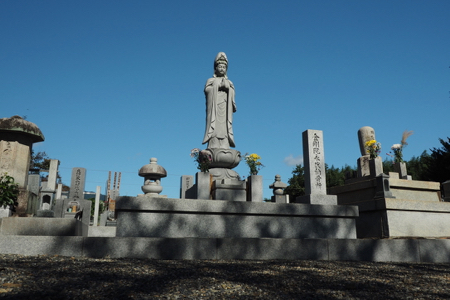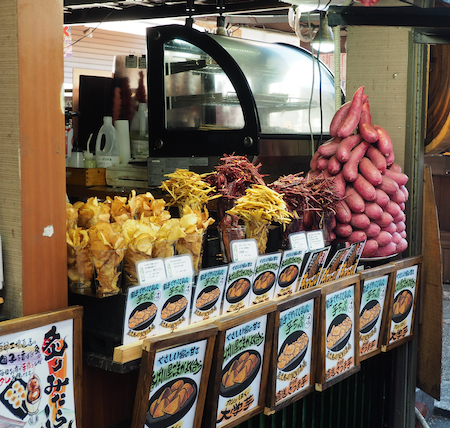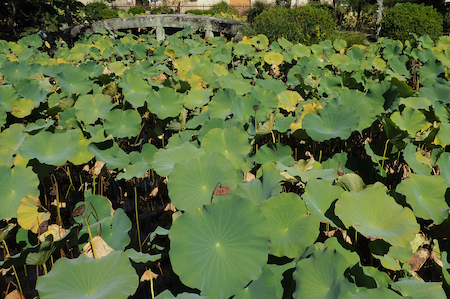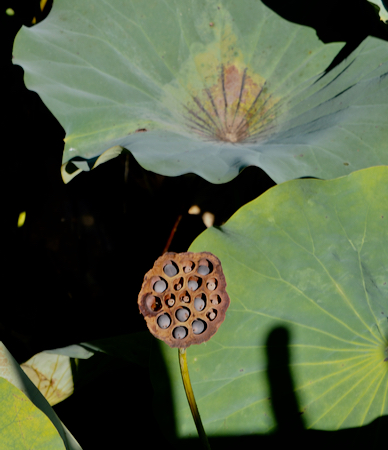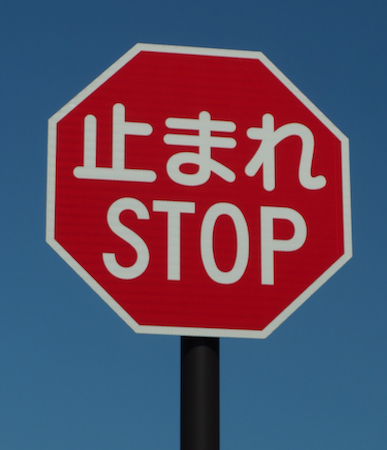The Kinkakuji (Golden) Temple (Pavilion) was built by the second Shogun as a three-story palace and is covered in gold leaf. After the shogun died, the building became a Buddhist temple. In 1987 it cost seven million dollars to re-gild the temple with gold leaf 5 times thicker than the original. It is currently a Zen Temple. Some think it conflicts with the serene natural setting of a lake and small rock islands and manicured trees.
Kinkakuji
Kinkakuji
Kinkakuji - golden Phoenix on top
Another "we were there" photo
Serene mirror pond (Kyoko-chi)
Lotus plants
Nice dragonfly
White Snake Pagoda of Kinkaku-ji
Head priest's former living quarters
Head priest's former living quarters
Hand-trimming the foliage
At 6 PM the group met in the breakfast room to eat slices of the apple, persimmon, and pear that the we found at the market. All were very good.After our "snack" we walked to the Kyoto Train Station diagonally across the street.
The station is a huge, modern, beautiful complex built in 1997. The architect was Hiroshi Hara. The complex is 15 storys tall and contains hotels, upscale shops, and restaurants and more shops and food in the adjacent underground mall - and, of course, trains.
We went up many flights of escalators to the Skyway walk over the complex. The light shows on the walls and down the steps have to be seen to be appreciated.
Go to this link to see an excellent video about the station.
Unpronounceable
Kyoto Train Station
Kyoto Train Station
Kyoto Train Station
Kyoto Train Station
Kyoto Train Station - lighted display on the steps
Kyoto Tower
After our tour, we found a grocery store in the underground complex, Jupiter, that sold crunchy Skippy peanut butter. We also purchased potato chips packaged in Italy and Havarti cheese to eat for dinner in our room. There seemed to be only Japanese-food restaurants in the train station.
Fri., 10/14 - Kyoto
Today the motor coach took us to Tenryuji Temple and bamboo garden, to the Nijo Castle, and to experience a Japanese Tea Ceremony.
The Tenryuji Buddhist Temple was a highlight. After crossing the Moon Crossing the River Bridge to the entrance of the Buddhist Temple, we entered and walked by the only zen garden we have seen. The gravel was raked in lines to represent the sea. Then we sat quietly on benches outside the Main Hall (used for lectures, not prayers) and looked at the beautiful Sogen Pond with its rocks, and a variety of artistic trees. In between entering tourists, it was very peaceful.Then we walked on through the Sogenchi Garden with weeping cherry trees and pines. There were signs on plants, some of which were very familiar like peony, azalea, rhododendron, hydrangea and others very different. We continued on to the bamboo forest walk. The bamboo were 5 to 8 inches in diameter and 3 or 4 stories high. It was peaceful and cool on the path.
Front Gate
Zen garden
Details on the Teaching Hall
Sogen Pond
Drawing Hall (Shoin)
A Toro - traditional Japanese lantern in the Sogenchi Garden
Helpful signs - Purple Beautyberry - Sogenchi Garden
Cotton Rosemallow - Sogenchi Garden
The coins kind of detract from the ambiance of the pond and frogs
Bamboo Forest
Bamboo Forest
Bamboo Forest
Manhole cover
Interesting sign
Cemetery
Food stand - nice sweet potatoes
Lotus pond
Lotus
| Return to Top | Return to Itinerary | Return to Trips page to view other trips | Return to Dreamcatcher Home Page |
